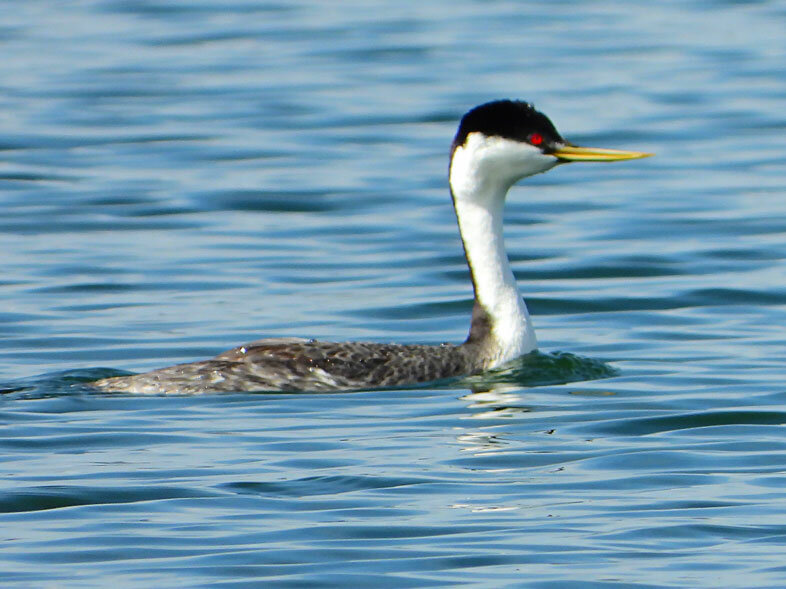
Photo courtesy Charles Martinez
This week’s Bird of the Week, compliments of the Weminuche Audubon Society and Audubon Rockies, is the western grebe.
On a map of North America, the breeding range of this waterfowl appears as an irregular blob covering states west of the Mississippi river to the coast and extending into southern areas of western Canada. Instead of the south to north direction that we usually associate with spring migration, many of these birds travel west to east from wintering areas along the Pacific Coast.
The habitat suitable for breeding by western grebes is fairly limited. In summer, they are found on large freshwater lakes with areas of emergent vegetation along the shoreline for nesting and populations of small schooling fish for food. In our area they can be found on Navajo Lake, Hatcher Lake, Echo Canyon Reservoir and Lake Pagosa.
With legs set back far on the body, western grebes are excellent divers but extremely awkward out of water. Their wings are small relative to body size, making even flight a challenge and requiring them to run across the water while flapping their wings fast in order to get airborne. These challenges, coupled with migrating under the cover of darkness, mean that these birds are rarely seen out of water.
Sitting low on the water, their long, white necks can give the appearance of serpents sticking up out of the water. Black caps which extend over the eyes; long, dagger-like yellow bills; and red eyes are distinguishing traits.
Western grebes are admired for the precision of the courtship ceremonies conducted by pairs which are among the most complex performed by birds. They are attentive parents which build anchored nests on floating mats of vegetation.
Soon after hatching, chicks climb onto the safety of a parent’s back, where they can hide from danger and remain for two to four weeks. Both parents alternate between back brooding and feeding the chicks.
Nesting by western grebes suffers when nests are flooded or tipped by wakes of watercraft, or if nests are abandoned when people on kayaks and paddleboards approach too closely.
For information on events, visit www.weminucheaudubon.org and www.facebook.com/weminucheaudubon/.